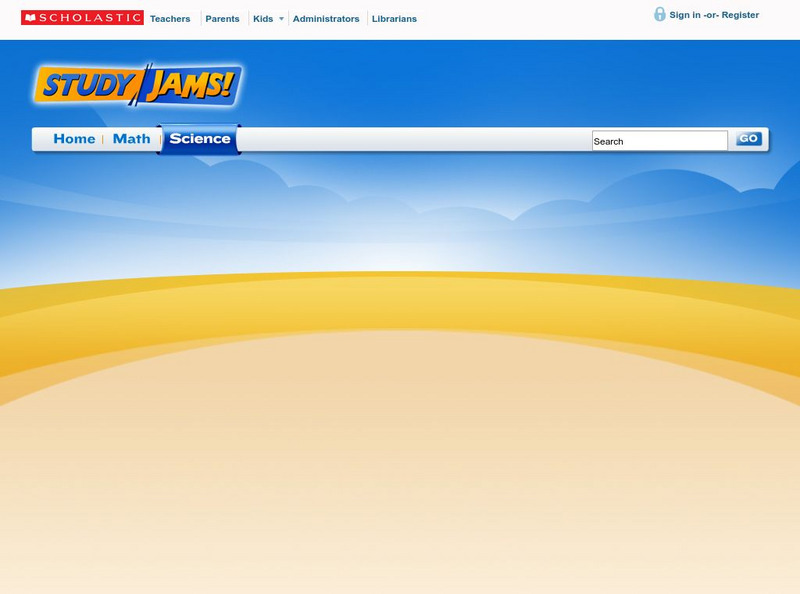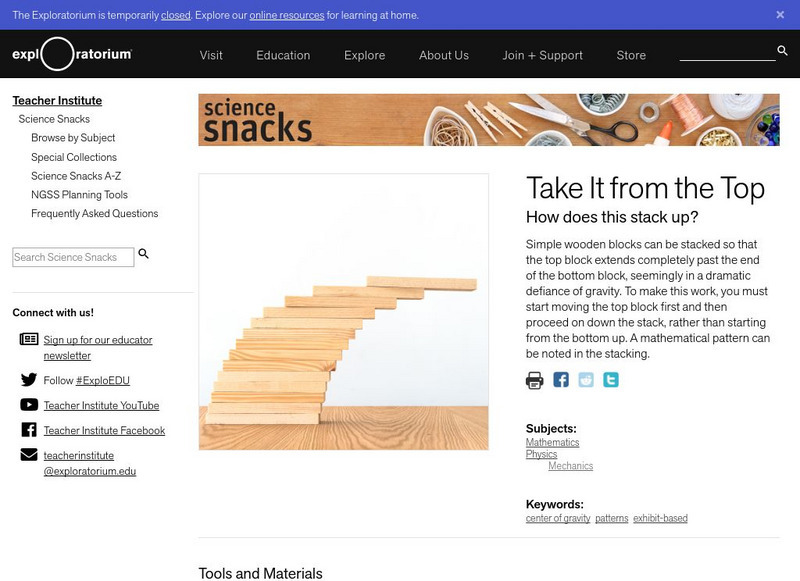Curated OER
What Does a Quarter Weigh?
Students study the historical figures and symbols of U.S.
patriotism depicted on the penny, nickel, dime, and quarter coins. They
create a balance scale from common materials to measure the approximate weight
of a quarter.
Curated OER
The Drinking Bird
Learners discover how toys often illustrate fundamental physical principles. The toy drinking bird is an example. The challenge for you in the lab is to discover why the drinking bird functions.
Curated OER
Simple Machines, Odd Machine
Students explore six simple machines and locate them operating in a compound machine. The simple machines are identified at a variety of stations set up in the classroom and continued by identifying the machines in their homes.
Curated OER
Catapults
Students discover the catapult. In this catapult lesson, students research the history of the catapult and how it works. They work in groups to build their own catapult using tootpicks, popsicle sticks, rubber bands, and spoons.
Curated OER
Math and Native Americans
Students explore how math is relevant to Native Americans. Students investigate Indian culture through geometry. They describe and create geometric polygons and patterns. Students problem solve with tangram patterns to make Indian...
Curated OER
An Introduction to Simple Machines
Learners investigate simple machines and their uses in everyday life. In this scientific method lesson, students examine physical tools such as wedges, screws, and levers using a "how does it work" approach. Learners complete...
Curated OER
WHY DOES MONEY HAVE VALUE?
Students learn that money has value by examining the history, meaning of money. market structures and pricing. In this analysis lesson, students use exchange rates to find the cost of an item different currencies.
Curated OER
FINANCE AND RESPONSIBLE LENDING.
Students study the role of banks, lending and their services. In this analysis lesson, students learn about savings, checking accounts and lending and the importance of banks as financial intermediaries.
Science Buddies
Science Buddies: Give It a Lift With a Lever
Simple machines allow us to do difficult tasks like lifting objects heavier than our body weight. In this science project you'll build a tabletop lever and measure how much effort it takes to lift an object by altering the length of the...
Museum of Science
Museum of Science and Industry: Online Science: Build a Lever
Step-by-step illustrated instructions for an experiment investigating how a lever works. An explanation of the science involved is given at the end.
Scholastic
Scholastic: Study Jams! Science: Force and Motion: Simple Machines
A slideshow and a short quiz on simple machines and how they reduce the amount of work or effort needed to complete a task.
Scholastic
Scholastic: Dirtmeister's Science Reporters: The Lever
This site provides a description of the lever and its many uses.
Math Science Nucleus
Math:science Nucleus:identifying Bones of the Body (Lab)
A nice site which provides descriptions of each of the bones that make up our skeletal system. Then there is a lab activity for students to complete in which they build a skeletal system and describe the structure/function of each bone...
Exploratorium
Exploratorium: Science Snacks: Take It From the Top
Students defy gravity by stacking blocks in different ways in this exercise. Other projects are linked to this lesson as well.
CK-12 Foundation
Ck 12: Physical Science: Lever
[Free Registration/Login may be required to access all resource tools.] Definition of a lever and the three different classes, and how each one changes force.
Science Struck
Science Struck: Simple Machine: Levers
Explains what a lever is, its history, how it works, the formula for calculating its mechanical advantage, classes of levers, and uses of levers.
Khan Academy
Khan Academy: The Forearm as an Example of a Third Class Lever
This is a five-question quiz related to the passage "The Forearm as an Example of a Third-class Lever."















